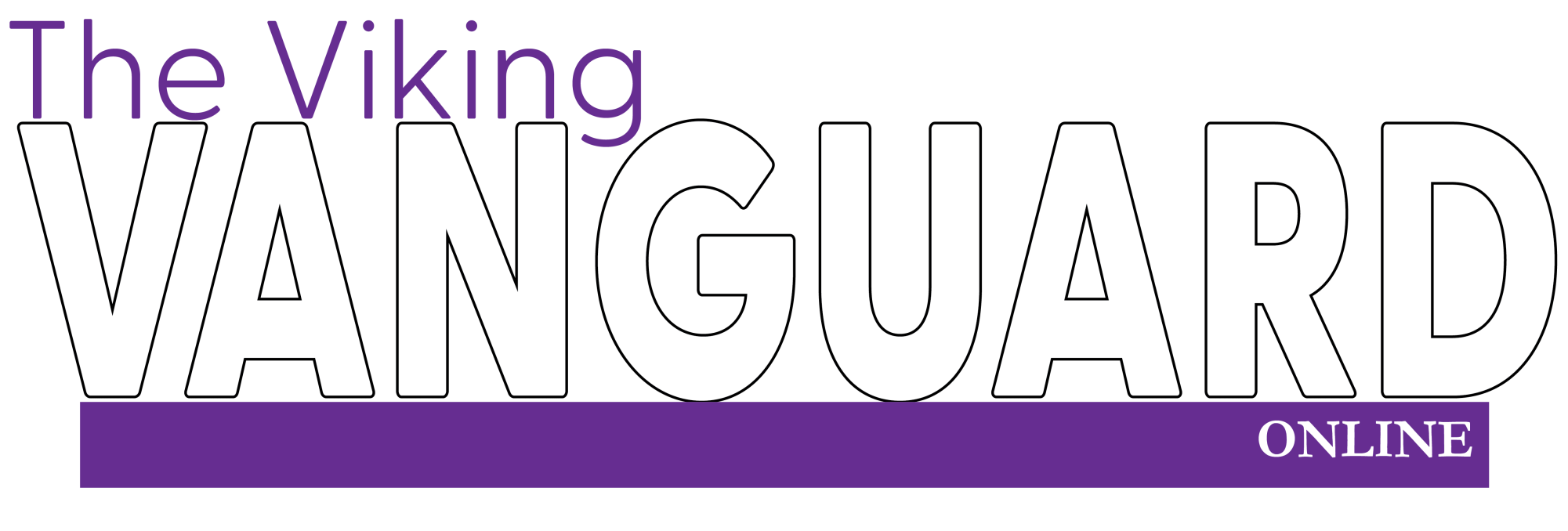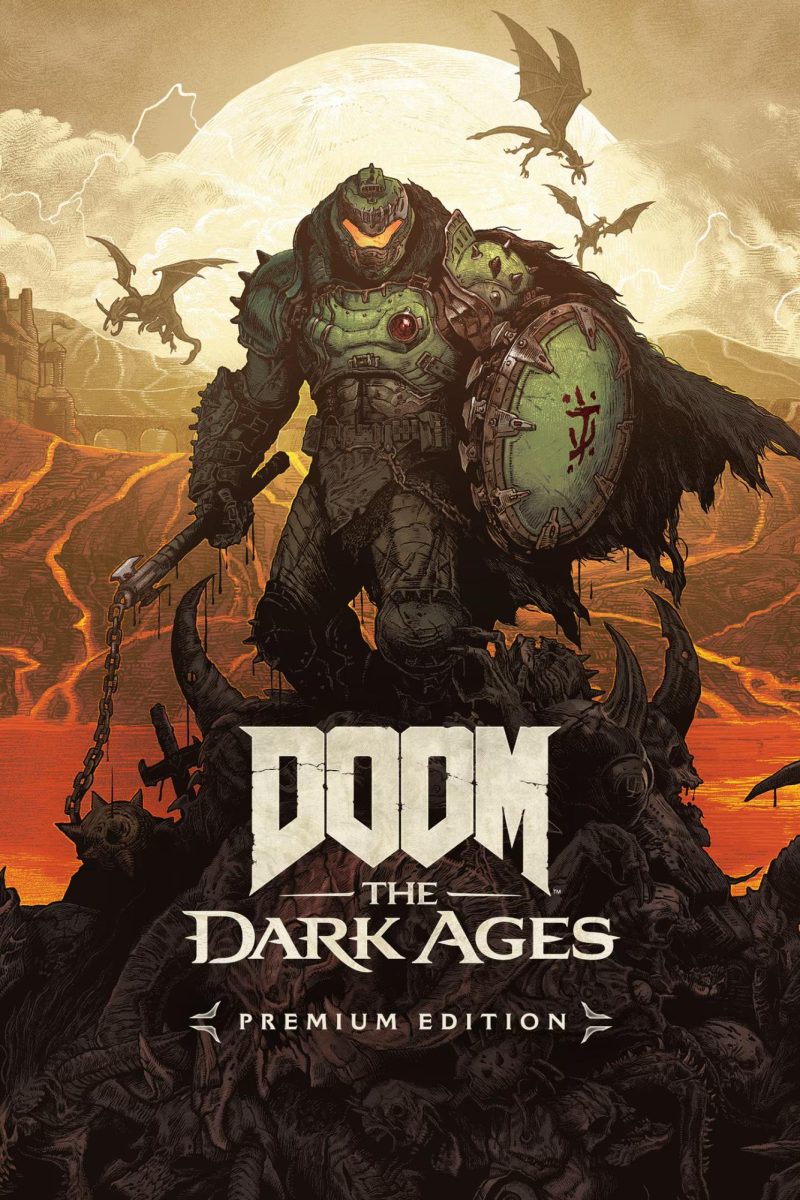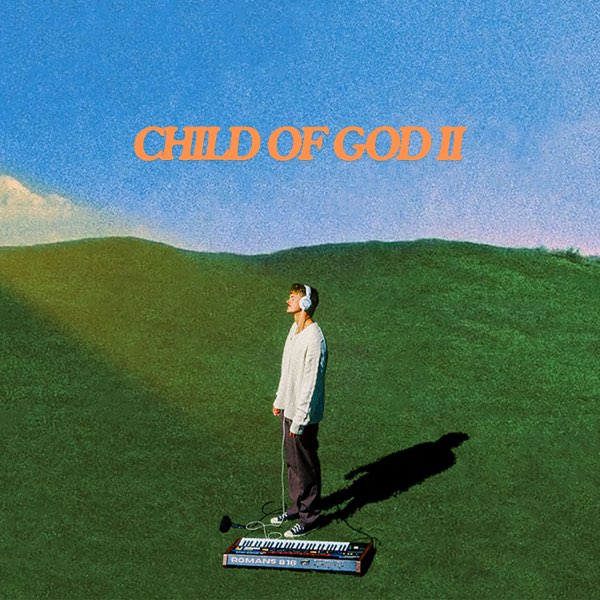“Doom: The Dark Ages” feels like the developers at id Software had Take Your Kid to Work Day and let them brainstorm ideas for the next game in the long running FPS series. And it’s incredible.
There’s a giant mechanical dragon you pilot, flying through medieval villages and destroying demonic ships with giant guns. There’s a shield you throw like Captain America, but it’s got a spinning blade around the edges that you use to chew through demons. And there’s a gun that crushes up skulls and spits them back at enemies. Combined with a new parry system and a heavier focus on story, “The Dark Ages” innovates on the classic formula while delivering the ripping and tearing that’s been so iconic for over 30 years.
After the 2016 reboot of “Doom” and its sequel, 2020’s “Doom Eternal,” development began on a prequel to those games. While “Eternal” revealed more about the backstory of the Doom Slayer, the silent protagonist you control throughout the series, and the previous war between the Maykrs and the forces of Hell, “The Dark Ages” throws you into that conflict, focusing on a brief chapter in that war. This greater focus on story brings more characters into the fold, but you’ll often feel the urge to skip the cutscenes to get back to chewing through massive numbers of demons like a cannonball with a shotgun. While the story is passable and the villains are menacing, there’s nothing special about the story other than a few jaw-droppingly epic moments in cutscenes.
The medieval setting, however, offers a change for the long-running series, away from dark military bases and hellish landscapes to vast forests and castles under siege. The designs of enemies, weapons, and the Slayer himself get a similar medieval twist, all rendered in the consistently stunning graphics, par for a series that pioneered 3D techniques when it was released. While the game requires raytracing-capable machines, it puts that requirement to good use. The lighting is consistently top-tier, often blowing me away with the realism. In one amazing, accidental moment, a barrel exploded, filling the besieged castle with smoke as the light from the projectiles shined through the smoke.
The slower pace of the gameplay allows players time to admire the switch in locations and amazing maps. The game offers a good mix of more linear levels and open world maps where you can tackle a series of objectives in any order. Both are visually impressive, but the linear maps usually offer more interesting gameplay and visual elements versus the open-world’s more hidden secrets and massive amounts of enemies.
The designs of the demons you fight have been upgraded from the more cartoonish designs of “Eternal,” now sporting metal armor and more kinetic weapons compared to the techno-logically enhanced armor and laser guns of previous games. They’re in no way grounded in reality, but they fit the new art style perfectly. A standout redesign is the flying demons known as the Revenants and Cacodemons, the former of which now sporting a scythe and menacing robes and the latter seemingly inspired by the works of H.P. Lovecraft.
The Doom Slayer himself received a medieval makeover, with more muted greens and prominent silver, a menacing fur cape and a redesigned, aggressive helmet. However, the biggest change from previous games is the addition of the Shield Saw, which adds another layer to the groundbreaking combat of the Doom series. As a shield, it blocks the attacks you can’t dodge and parries others, knocking the enemy back for a shotgun blast or reflecting a projectile back into the face of an unsuspecting demon. And as a weapon, you can throw it straight through fodder demons for some extra health or into larger enemies, lodging it in their bodies to cause damage and interrupt their actions.
This drastic change in the gameplay shows that the developers aren’t content with reusing what worked from the last game but are always willing to reinvent the gameplay. The weapons reflect this ethos as well, with new guns that force the player to engage with the gunplay in different ways. The classic shotgun and Super Shotgun, staples of the series, are of course here, but other weapons add new wrinkles to the gameplay. The Chainshot, which fires a slow but powerful ball and chain, the Shredder, which crushes up the skulls of demons and fires them in a wide spread to take out crowds, and the Grenade Launcher, which is self-explanatory, are some of the most fun new weapons.
The weapon switching has been simplified, with less options on the weapon wheel due to a dedicated button that swaps between two weapons of the same type (the Shotgun and Super Shotgun for example). The core gameplay loop can be boiled down to “dodge/block, parry, attack,” but the weapon variety and the weight of the Slayer’s attacks and movements keep the loop fun throughout the game’s 22 levels, each taking about an hour to get through.
Another addition to the gameplay is the sections where the Slayer pilots a dragon or a giant mech. While both are only available in certain sections, the gameplay for each is fun for the first time. However, both suffer from rudimentary controls and repetitive gameplay, the mech sections especially. When flying the dragon, the gameplay loop is usually dodging attacks from cannons, which powers up your attacks enough to knock out the cannon shields and then destroy them. Then, you fly to the next set of cannons and do it again. While the flying is exhilarating and intuitive, the attacking sequences kill any sense of momentum, as you literally hover in place waiting for the dodgeable attacks. The mech gameplay is similar, as you shoot at other giant demons while waiting for a dodgeable attack that powers you up to take them down.
Thankfully, these new additions to the gameplay are spread throughout the game, with the normal levels injecting new mechanics into nearly every level to keep things fresh. The difficulty and complexity of levels gradually increases throughout the game as you master old mechanics, upgrade your weapons and suit, and gain access to new tricks. At any time throughout the game, you can adjust the difficulty with sliders such as the amount of damage you take, the amount of damage you put out, and the window of parry timing.
That last one is especially helpful for me, as I’ve never mastered parries despite attempting multiple games where parries are a key gameplay feature. The ability to increase the window to parry attacks greatly reduces the amount of frustration when playing, which is of course a net positive in my enjoyment of the game.
The only notable downgrade from previous games is the soundtrack. While both “Doom” and “Doom: Eternal” featured a killer metal soundtrack from the legendary Mick Gordon, he ended his relationship with id Software and the Doom series after a complicated dispute over the soundtrack for “Eternal.” For this game, Finishing Move Inc., a team that has scored games like “Halo Wars 2,” “Borderlands 3,” and “Microsoft Flight Simulator 2024” were brought on to score the game. The soundtrack is adequate, but it isn’t an essential part of the game like Mick Gordon’s work was. To put it more simply, the soundtrack in this game would be improved by dropping in “Rip and Tear” from the 2016 “Doom” soundtrack, but you’d lose some of what made that game great if this soundtrack was used there.
As id Software continues to take huge leaps with their flagship series and land every one, “Doom: The Dark Ages” stands on the same level as the two previous games – a coherent, innovative, and thrilling experience where you feel like the legendary Slayer you are told you are. A DLC has been announced, and more games are likely in development, as the game’s director has stated that space was intentionally left open for more stories in the medieval setting.
“Doom: The Dark Ages” is available on PC, PlayStation 5, Xbox Series X/S, and Xbox Game Pass.






